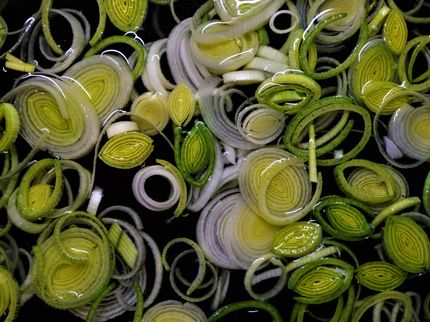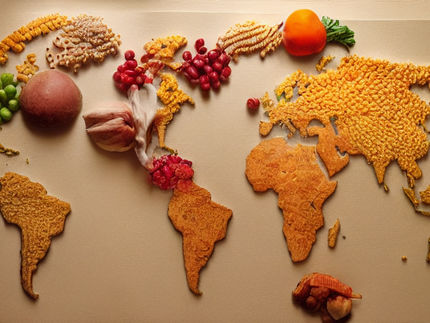How COVID-19 accelerated the 2030 Food & Drink Trends
Advertisement
An extraordinary string of events in 2020 has amended and accelerated Mintel’s 2030 Global Food & Drink Trends. Social distancing measures and economic shutdowns created new habits and attitudes. For example, people used their time at home to learn new cooking, baking or coffee-making skills that will be useful beyond the pandemic.

41330 / Pixabay
The number of infections, deaths and job losses has heightened concern for human welfare. This will make ethical human claims a focus within the ‘Change, Incorporated’ trend. Interest in buying local and sustainable food will hasten the acceptance of the agricultural and scientific innovations predicted by ‘High-Tech Harvests.’ The ‘Smart Diets’ trend also is more relevant because the outbreak showed the necessity to stay healthy.
Here, we take a look at how COVID-19 accelerated the ‘Change, Incorporated’ and the ‘High-Tech Harvests’ 2030 Global Food and Drink Trends:
CHANGE, INCORPORATED
Caring for people replaces packaging reduction as the key corporate social responsibility message
The ‘Change, Incorporated’ trend noted the powerful role companies can play to advance social and environmental causes. This is especially true because COVID-19 has caused governments to take on unexpected costs to take care of citizens and reinforce economies. As governments struggle to balance budgets, corporate commitments will now be essential in order to make progress on essential causes.
At the start of 2020, the responsible use of plastic was the paramount corporate social responsibility (CSR) initiative for food and drink. Yet COVID-19 caused worries about safety and hygiene that led to a return to food and drink packaged in plastic.
The same concern for safety and health has elevated the welfare of people to be the top priority of CSR messaging. Since the outbreak, shoppers of all income levels want to know how companies are taking care of employees, suppliers, farmers, local community members and the overall human population.
COVID-19 inspires reflection about spending habits
‘Change, Incorporated’ predicted that conspicuous consumption habits would fall out of fashion through 2030. Instead, shoppers would adopt more mindful purchases and behaviors, known as conscious consumption.
COVID-19 inspired people to reassess what is truly important in their lives – and their budgets. More mindful spending forms the foundation of conscious consumption.
Subsequent steps of conscious consumption will be to support ethical and environmentally friendly brands. Yet many sustainable and responsible brands carry premium prices. Additional costs were barriers for some before the pandemic, but COVID-19 shutdowns have caused spikes in unemployment and underemployment.
Price will be a primary concern for many post-COVID-19 shoppers. Food and drink companies and retailers can take efforts to make sustainable and responsible products affordable to conscious consumers of all incomes.
Consumers adopt ‘less but better’ eating patterns during the outbreak
During the outbreak, shortages and price hikes caused some shoppers to swap animal protein for plant-based protein, such as beans and legumes. These changes are steps toward “less but better” diet mantras.
Under the “less but better” philosophy, people consume dairy, meat, poultry and other animal products less often, but trade-up when they consume them. These buyers often choose animal products that are better-tasting, more nutritious or have ethical or environmental claims (or a combination of these factors).
More mindful consumption of animal products is a step toward sustainable, or planet-friendly, diets. The UN FAO defines sustainable diets as having “low environmental impacts that contribute to food and nutrition security and to a healthy life for present and future generations.” More people will follow these diets through 2030.
HIGH-TECH HARVESTS
Fractures in the supply chain heighten the need for new ways of growing and manufacturing food
High-Tech Harvests predicted a slow evolution during the next 10 years as consumers learn to accept the use of science and technology in food production. COVID-19 accelerated this timeline because it has illuminated the intricacies of the global food supply chain. Sudden economic lockdowns compromised the abundant access to affordable, safe and nutritious food and drink that many shoppers expect.
Supply chain shortages and anxiety about food safety will act as catalysts for the acceptance of agricultural and scientific advancements. More food and drink manufacturers and retailers can invest in innovative methods to grow and make food, drink and ingredients in new ways.
Local is one key advantage because COVID-19 sparked the support of local businesses, according to Mintel’s global consumer research. A more robust local food supply also will increase equitable food access and may reduce prices.
Food is being grown in new places
At-home gardening boom
The pandemic incited widespread interest in personal victory gardens or community gardens where people invest their time and energy in food production. Hamama Grow Kits is one of many DIY kits that help people grow food at home.
Expansion of store-grown herbs
Infarm at Irma Copenhagen. Retailer Irma is extending in-store vertical herb farms from Infarm to all of its stores in Denmark. The in-store farms are said to provide fresh climate-friendly herbs, use 95% less water and no pesticides.
Ocado’s big investments
Jones Food Company, which is Europe’s largest operating vertical farm, sold a 58% stake to online grocer Ocado Group in mid-2019. Ocado also formed a joint venture with 80 Acres and Priva to further advance vertical farming.
Automation can help secure a safer supply chain
COVID-19 elevated consumer awareness of human health and safety in the food supply. People now want to know more about workers’ safety, rights and compensation.
At the same time, the need to guarantee safe and clean working conditions will inspire more companies to explore how automation could be used in their operations. Robots could be used to maintain safe distances between human staff. Automated technology also could make facilities less susceptible to staff shortages due to illnesses or immigration restrictions.
Importantly for consumers, automation could make for a more resilient and safe food supply. It also could lower prices, an advantage during a recession.
Yet COVID-19 has made people highly interested in worker welfare. Companies that will succeed will be those that reinvest in their workforces, train employees to complement robots or educate people to move to other roles.
Other news from the department business & finance
Most read news
More news from our other portals
See the theme worlds for related content
Topic world Food safety
Food safety is at the heart of the food and beverage industry. It ensures that the food we eat every day is not only nutritious, but also free of harmful contaminants. From field to plate, the industry monitors and regulates every step of the process with strict quality controls, advanced testing methods and continuous research.

Topic world Food safety
Food safety is at the heart of the food and beverage industry. It ensures that the food we eat every day is not only nutritious, but also free of harmful contaminants. From field to plate, the industry monitors and regulates every step of the process with strict quality controls, advanced testing methods and continuous research.



























































